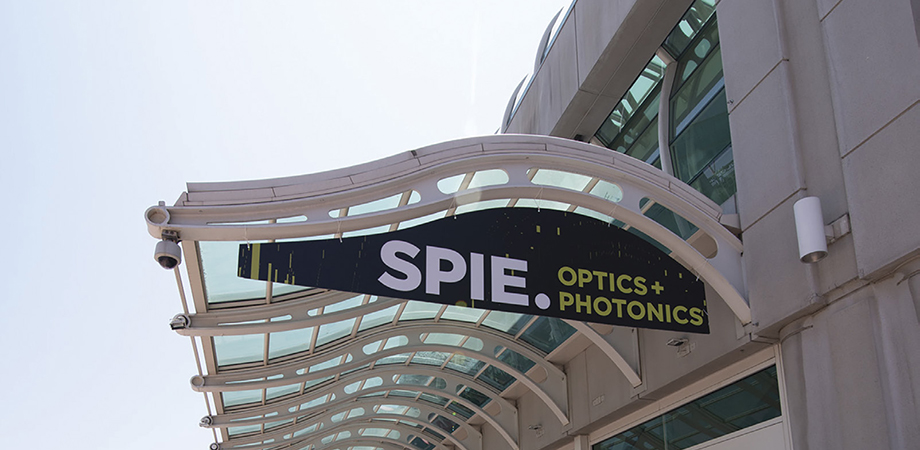At SPIE Optics + Photonics, researchers will gather to hear advances in optical engineering and applications, nanotechnology, quantum science, organic photonics, and astronomical instrumentation. This event offers innovative technologies to help industry, academia, and government find better ways to preserve our environment, understand and develop new photonics technologies, and discuss emerging applications for optics and photonics.
Plenaries focus on Astro, Nano, Opto
In odd-numbered years, SPIE Optics + Photonics includes a technical program focused on astronomical instrumentation, in addition to the annual conference tracks in nanoscience, organic photonics and electronics, and optical engineering. Several plenary talks will give updates on completed and upcoming space missions.
John Callas from NASA's Jet Propulsion Lab will discuss the exploration and discovery of Mars made possible by the Mars Exploration Rover Opportunity. The rover was originally designed for a 90-day mission, but successfully explored Mars for 14.5 years, traveling over 45 kilometers. Its objective was to assess the past habitability at different locations on the surface of the red planet, and was our first overland exploration of another world.
Martin Gehler will discuss the European Space Agency's LISA mission, which will be the first space-based gravitational wave observatory, consisting of three spacecraft separated by 2.5 million kilometers in a triangular formation following Earth in its orbit around the Sun. Gehler will present the mission concept and discuss its current state of development, as well as the technological challenges, especially with the optical metrology.
Massimo Mascaro, part of the Applied AI team for Google Cloud, will discuss the potential of AI and cloud computing to profoundly augment the toolset that scientists have at their disposal. He will discuss some of the recent work done in collaboration with NASA to help process exoplanet data and characterize life signatures identified by TESS and Kepler.
Hubert M. "Buddy" Martin, project scientist at University of Arizona's Mirror Lab, will describe the advances in mirror technology that enabled the current generation of 8- to 12-meter telescopes. These technologies are now being used to plan and build giant telescopes of 25 to 39 meters.

Giant Magellan Telescope mirror filled with low-expansion glass, ready for the lid of the furnace to be placed at University of Arizona's Mirror Lab. Hubert Martin will discuss advances in mirror technology for giant telescopes during his plenary talk.
In addition to these astronomy-themed talks, plenary speakers will present on other topics related to the conference, including plasmonics-enhanced terahertz spectroscopy, 3D super-resolution imaging in cells, and stretchable optoelectronic devices. More plenaries, in addition to hundreds of talks, will round out the four-day technical program.
Learn something new
Optics + Photonics will offer numerous course options for continuing education needs, all taught by leading experts. Two courses on design are perennial favorites: Practical Optical System Design (SC003) and Introduction to Optomechanical Design (SC014). Optomechanics and Optical Manufacturing (SC1085) and Deep Learning and Its Applications in Image Processing (SC1222) are also guaranteed to be popular.
Several new courses have been added to the course catalogue to engage people interested in these growing topics of research:
- Optical Measurement of Surface Topography (SC1271)
- Mirror System Design with Freeform Surfaces (SC1272)
- Introduction to Magnetic Random Access Memory (MRAM): Fundamentals, Current Status, and Emerging Device Concepts (SC1273)
- Introduction to Fundamental Performance Limits of CCD and CMOS Imagers (SC1274)
- Photodetectors—A Practical Selection Guide (SC1277)
Job fair
Over the years, SPIE has worked with more than 4,000 companies, recruiters, and research institutions to help them find technicians, technical sales people, scientists, and engineers. At Optics + Photonics, the job fair will be held in conjunction with the exhibition, where recruiting companies will be ready to talk to prospective employees. Job seekers should bring resumes and be prepared to tell the recruiter about themselves in two minutes or less. The job fair is free to attend, but registration is required.

Student program
Students enjoy attending Optics + Photonics for the numerous student and career development activities. Following Saturday's perennially popular student chapter leadership workshop, student chapters will present their optics demonstrations at the lively Optics Outreach Games on Sunday night. Students will also present posters at the Student Chapter Poster Exhibit, explaining how their chapters have helped increase optics awareness and literacy in their regions.
Professional development
Attendees will have the opportunity to focus on career development through numerous workshops and presentations that will help hone valuable job skills. Listed below are just a few of the activities related to professional development that come with registration. No advance registration is required, but seating is limited and will be granted on a first-come, first-served basis.
- Networking for Researchers
- Grant Writing
- Making the Most of your Presentation
- Women Communicating with Confidence
- Conveying Messages with Graphs
- Effective Resumes and Successful Interviewing
- Careers in Industry
- Salary Negotiation
| Enjoy this article? Get similar news in your inbox |
|




